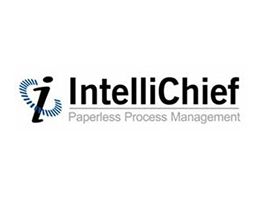Often huge ERP systems don’t meet business needs because they are too complex and require too much customization. As a result of having multiple systems, most organizations operate in a “ hybrid reality ”.

Many companies choose to implement specialized packages for their industry or their region. In a post-acquisition environment often the parent company’s ERP system isn’t the best-fit for the subsidiaries. For example, a large oil and gas distribution company in Texas uses a co-existence strategy whereby business processes are fully integrated between the SAP system at headquarters and multiple JD Edwards ERP implementations at its subsidiaries. Moreover, while many companies are enticed by cloud-based systems, some are trying them on a smaller scale before moving over their entire business.
Organizations need to be prepared with an integration strategy that looks at integration points across ERP, CRM, Warehouse Management, PLM and cloud environments. The goal is to be able to change processes quickly and cost-effectively while maintaining systems integrity, governance, and compliance; in short to arrive at an ERP solution that is well sized across the enterprise with seamless business processes between divisions.
An integration platform can be the glue that holds applications together and the plumbing that facilitates the free flow of data. For example, middleware can enable data from a Salesforce CRM system to be translated into a format that an Oracle ERP system can use. However, enabling the exchange of data between systems is not enough. In order to make post-modern ERP solutions efficient and effective, middleware platforms need to have the following capabilities built-in:
-
Support for Big Data is needed to manage the huge volumes of data generated, stored and shared in ERP systems. With an In-Memory Data Grid architecture, if a node fails, the management system shifts the processing to a different node, thereby preventing any data loss. When traffic peaks and processing requirements increase, the management system automatically recruits more nodes, adding scale elastically when it’s needed.
-
Cloud Friendly is essential since today’s ERP systems use a variety of cloud-based systems, which are often procured on short-term contracts and frequently switched from one supplier to another. An application integration platform should be able to handle multiple clouds architectures and to manage data in this highly dynamic environment.
-
Device Agnostic allows developers to create a native application from a single source which can present the data in the most natural way based on the user’s device. This can be accomplished by taking the output of the integration flow, and then processing it through a presentation layer which can change the look and feel of the application depending on whether it is a smartphone, tablet, or PC.
-
Secure connections in a predictable manner to other databases, frameworks, applications and endpoints. Certified integration connectors are advisable meaning that that system has been approved and validated by the vendor. In many cases, using an approved integration solution means that your maintenance and support agreements with the vendor will be honored. Using non-vendor-approved integration solutions could leave you without support in case you experience difficulties and the vendor blames the systems integrator.
ERP project size and complexities will always create a risk of increasing project cost overruns and less than optimal results. Having a flexible, scalable, robust integration platform that can work as the engine for right sized ERP can provide the needed flexibility and functionality that can increase the chances for success.






